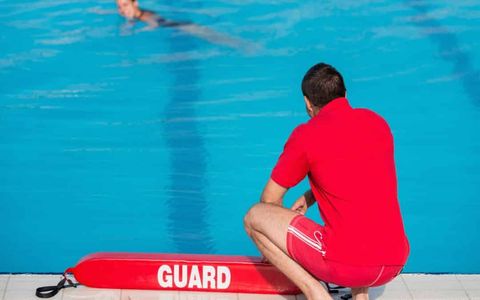The Evolution of Lifeguarding: New Standards and Policies in 2025
 Dema Ali
10 Mar, 2025
6 mins read
317
Dema Ali
10 Mar, 2025
6 mins read
317

Lifeguarding has always been a critical component of public safety in aquatic environments. Over the years, advancements in technology, medical training, and regulatory policies have reshaped the profession. In 2025, new standards and policies continue to refine lifeguarding practices, ensuring a safer and more efficient approach to water safety. This article explores the latest developments in lifeguarding, highlighting key changes in certification requirements, technological innovations, and updated rescue techniques.
Enhanced Training and Certification Requirements
To maintain high safety standards, lifeguard class organizations have introduced more rigorous training and certification processes. The American Lifeguard Association, International Lifesaving Federation, and other governing bodies have updated their programs to include:
- Extended CPR and First Aid Training: Lifeguards must now undergo more intensive CPR and first aid courses, including additional training on automated external defibrillators (AEDs) and oxygen administration.
- Mental Health Awareness: Recognizing the psychological stress lifeguards face, new certification programs include mental health and crisis management training.
- Virtual Reality (VR) Simulations: Many training programs incorporate VR simulations to prepare lifeguards for real-life scenarios, allowing them to practice rescues, CPR, and emergency response in a controlled virtual setting.
- Standardized International Certifications: Efforts have been made to harmonize lifeguard training worldwide, ensuring consistency in skills and procedures across different regions.
Technological Innovations in Lifeguarding
Advancements in technology are significantly enhancing lifeguard efficiency and response time. In 2025, several key innovations have been widely adopted:
Drones for Surveillance and Rescue: Equipped with cameras, life rings, and communication devices, drones assist lifeguards by identifying distressed swimmers and delivering flotation devices before lifeguards reach them.
- AI-Powered Drowning Detection Systems: Many public pools and beaches now use artificial intelligence (AI) to monitor water activity. These systems analyze movement patterns and detect potential drowning incidents, alerting lifeguards instantly.
- Wearable Health Monitors: Lifeguards now use smartwatches and biometric sensors to track their heart rate, hydration levels, and fatigue, ensuring they remain in peak condition during their shifts.
- Improved Rescue Equipment: New lightweight, high-buoyancy rescue tubes and motorized rescue boards allow for quicker and more effective water rescues.
Updated Policies for Public Safety
To enhance overall safety, new policies have been enacted in 2025, affecting both lifeguards and aquatic facility operations. Some of the most impactful policy changes include:
Stricter Supervision Ratios: Many jurisdictions now mandate lower lifeguard-to-swimmer ratios, ensuring more vigilant monitoring and faster response times.
- Mandatory In-Service Training: Lifeguards must complete ongoing education and skills assessments throughout the year to stay current with evolving safety protocols.
- Increased Accessibility Measures: Public pools and beaches are required to improve accessibility for individuals with disabilities, including adaptive rescue techniques for lifeguards.
- Stronger Emergency Action Plans (EAPs): Facilities must have comprehensive, regularly tested emergency response plans, ensuring all staff members are prepared for various crisis situations.
Environmental Considerations in Lifeguarding
Environmental concerns have influenced lifeguarding policies, leading to more sustainable practices:
- Eco-Friendly Uniforms and Equipment: Many lifeguarding organizations now use recycled materials for uniforms and rescue gear to reduce environmental impact.
- Solar-Powered Lifeguard Towers: Some beaches have transitioned to using solar energy to power lifeguard stations, reducing reliance on non-renewable energy sources.
- Enhanced Water Quality Monitoring: Lifeguards are now trained to monitor and report water pollution levels, helping to maintain cleaner aquatic environments for swimmers.
The Future of Lifeguarding
As lifeguarding continues to evolve, we can expect even greater integration of technology, improved training methodologies, and stricter safety regulations. The profession remains essential to public safety, and with these advancements, lifeguards are better equipped than ever to prevent accidents and save lives.
By staying informed about the latest policies and standards, lifeguards and facility managers can contribute to a safer and more effective aquatic environment for everyone. The changes in 2025 mark a significant step forward in the ongoing mission to improve water safety worldwide.
Written By:
Dema Ali



Hotels at your convenience
Now choose your stay according to your preference. From finding a place for your dream destination or a mere weekend getaway to business accommodations or brief stay, we have got you covered. Explore hotels as per your mood.


